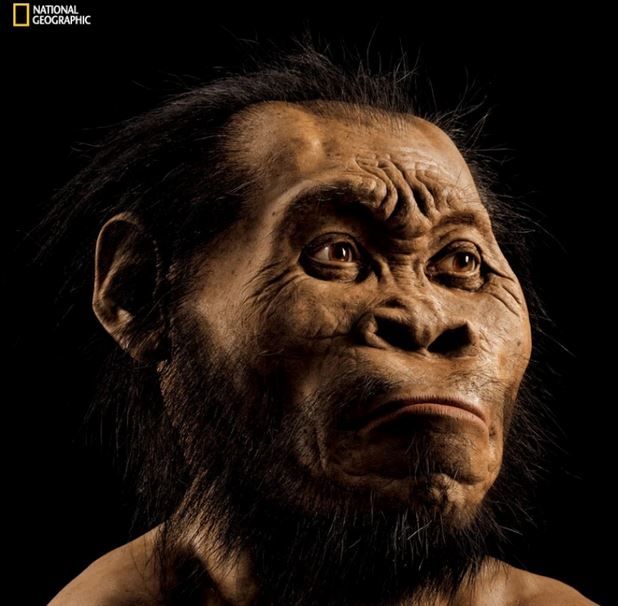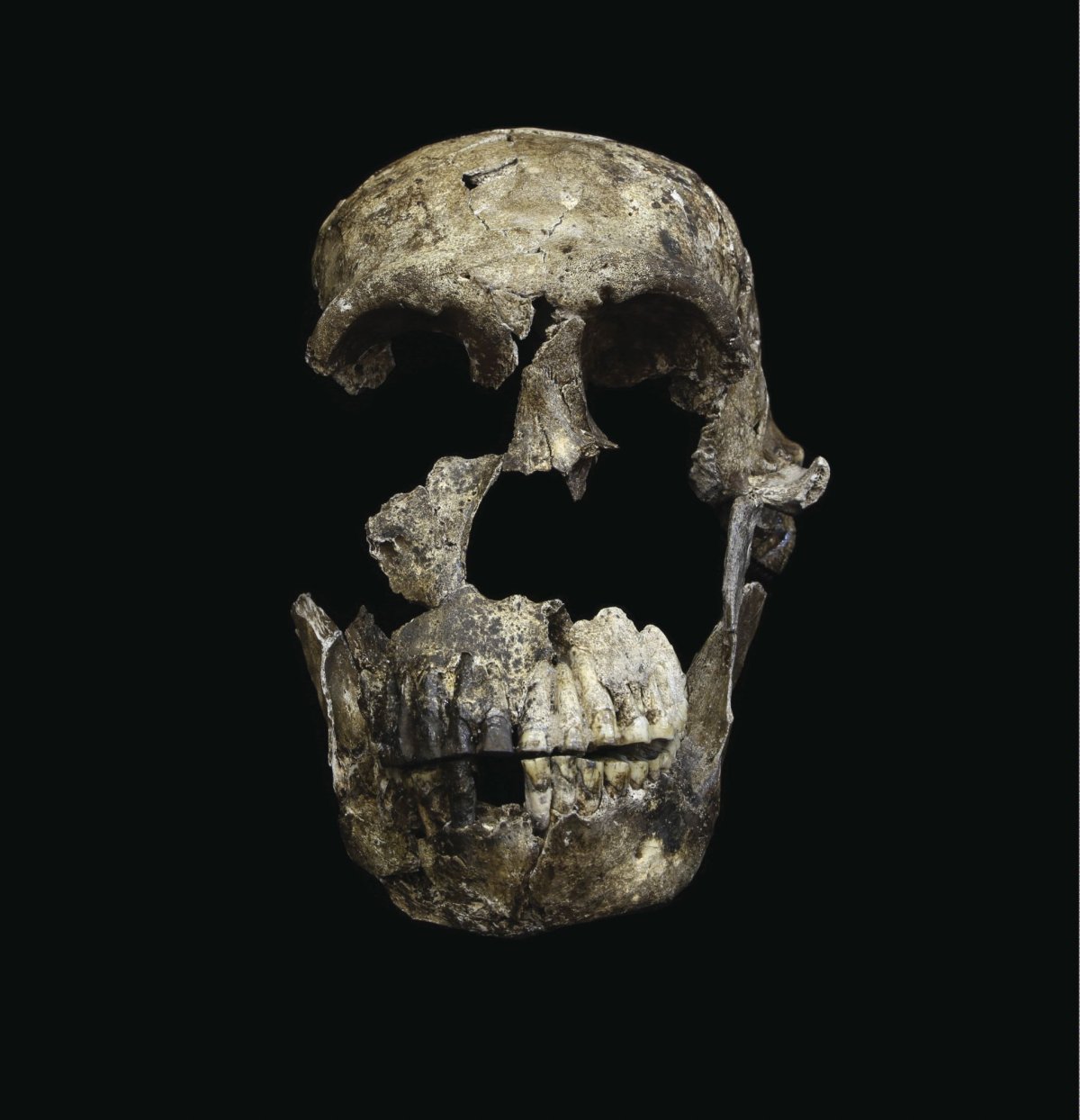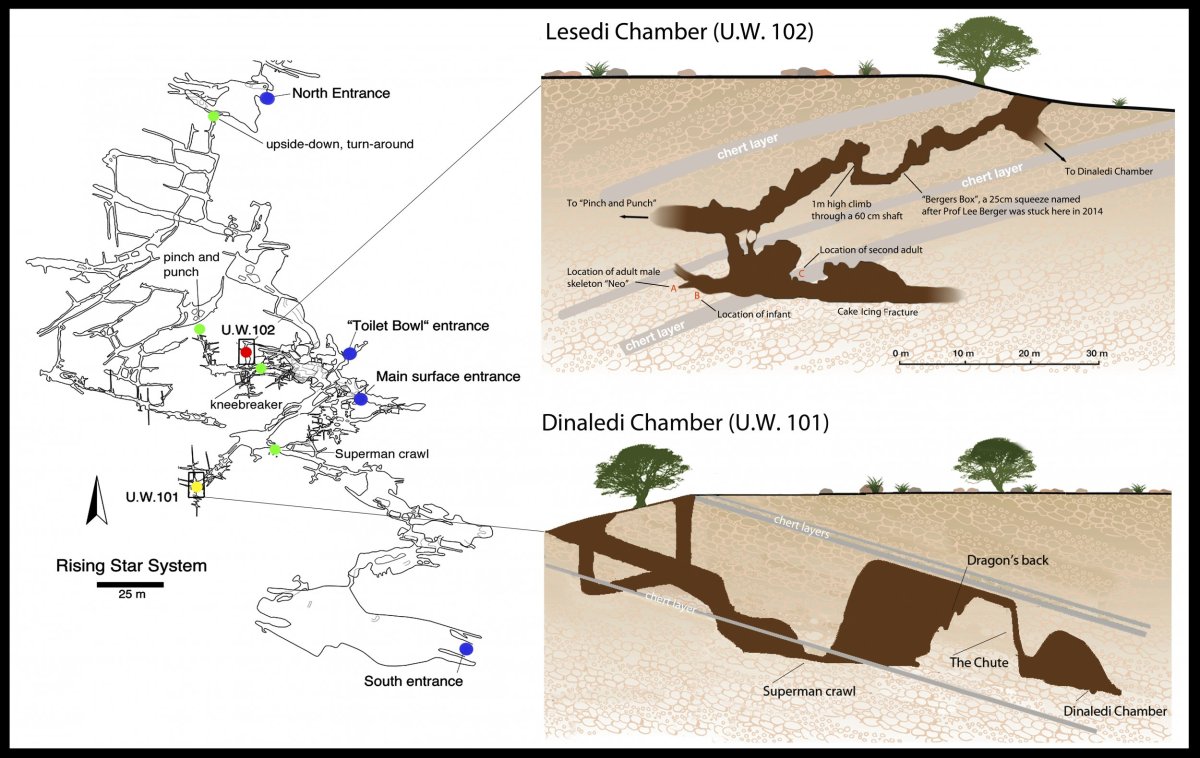
Expect the unexpected, goes the saying. And that's archaeology—just when you think it's all sorted out, you turn a spade full of earth over (usually on the last day of the dig) and there it is, the find that changes everything. Perhaps we should not have been so surprised at Homo naledi—there are, after all, precedents for the unprecedented.
No one ever dreamed of Homo floresiensis, the "hobbit" from the Indonesian island of Flores, a hominin with a brain the size of an Australopithecine, an extinct genus of hominin that lived between four and two million years ago that includes the famous "Lucy" specimen. Yet there it is. What's more, recent work on Flores suggests it had emerged as a species by 700,000 years ago and lasted until at least 100,000 years ago. So, tucked away on its island retreat, it spanned the time Homo sapiens evolved and left Africa maybe 100,000 years ago.
Homo naledi is similar. Yet it was not hidden away on a far flung island. Archaeologists found it in an area rich in hominin species and their archaeology—the so called Cradle of Humanity in South Africa. Scientists discovered H. naledi remains within chamber in a cave in South Africa in 2013. The species was officially described two years later—a hominin species new to science.

The first discovery was a surprise—but even greater surprises were to come. Archaeologists announced on Tuesday they had found another chamber containing H. naledi remains. Combined, the discoveries are raising major questions about the evolution of our early ancestors.
The date just announced for the first lot of remains discovered is between 330,000 and 230,000 years ago. It has a mixture of traits seen on older, contemporary and younger species of Homo (the genus to which modern humans belong), and even from other genera like Australopithecus. This is puzzling. What was natural selection up to?
At such a late date (evolutionarily speaking) it shouldn't look like it does. Before the dating was announced, many of these features led some researchers to suggest it was old, existing near the end of the Australopithecines and near the beginning of early Homo, maybe two million years ago.
Now it seems H. naledi lived at a time when Homo heidelbergensis in Africa (sometimes called Homo rhodesiensis) was fully established. At this time, H. heidelbergensis was making Acheulean hand axes and possibly even the more advanced Middle Stone Age tool industries.
Some researchers like to suggest that at this point in time, we have a new species called Homo helmei. They believe this species transitioned to the earliest Homo sapiens. There is a lot of debate about this.
The oldest modern humans are about 195,000 years old from East Africa—and that's awfully close to the youngest potential age for H. naledi. To turn H. naledi into H. sapiens is a big jump in a short period of time—and there are much better candidates.
So where does H. naledi fit? Are these the remains of an isolated species coming to their end of their evolutionary history, a side branch in our story? Or are they the result of multiple interbreeding events between different species as the authors suggest might be one explanation? We didn't expect there to be evidence of species interacting in such a way a few years ago, but now we aren't so surprised—we now know early humans mated with Neanderthals, for example.

Or alternatively, is this mish-mash of anatomical traits a result of H. naledi being an ancient species, never before discovered, from which later species emerged, accentuating some of those traits in favor of others as selection shaped them to their environments? We just don't know.
Where H. naledi was discovered is a puzzle too. Its deep in a cave system—the Rising Star—that is difficult to get to. The first finds were made in the Dinaledi chamber. Now new finds have been announced in the Lesedi Chamber. There is no connection between the two. There may be upwards of 15 individuals in the Dinaledi, and perhaps three or more in the Lesedi.
Why are they there? There is no evidence that either chamber was a living space, and there are no carnivore remains to suggest they were dragged there as supper for hyena or other carnivores.
Curiously there are no stone tools either. Did they fall in? Were they pushed? Why are they in two different chambers so difficult to access?
The authors of the new articles would like us to believe they were put there by others of their kind, but there is a long way to go before we can be certain of that—but archaeology has revealed stranger things before.
One thing is for sure—there will be more surprises.
John McNabb is a senior lecturer in paleolithic archaeology at the University of Southampton, U.K.
Uncommon Knowledge
Newsweek is committed to challenging conventional wisdom and finding connections in the search for common ground.
Newsweek is committed to challenging conventional wisdom and finding connections in the search for common ground.
About the writer
To read how Newsweek uses AI as a newsroom tool, Click here.








